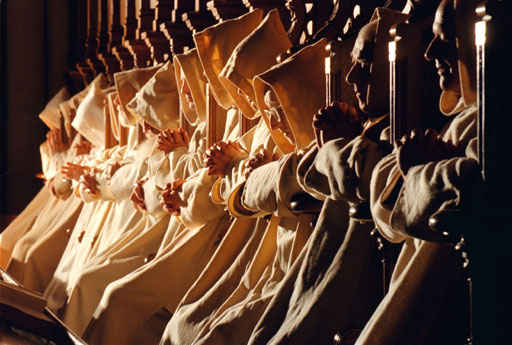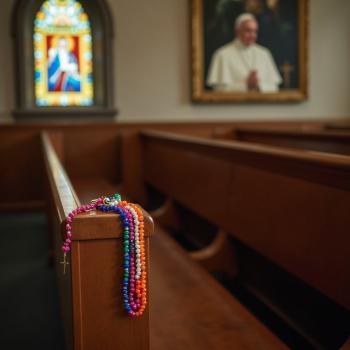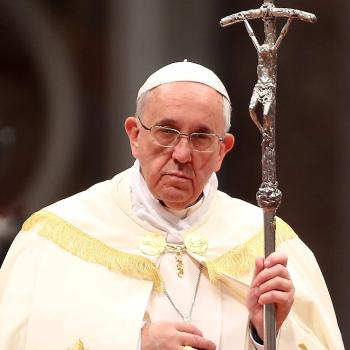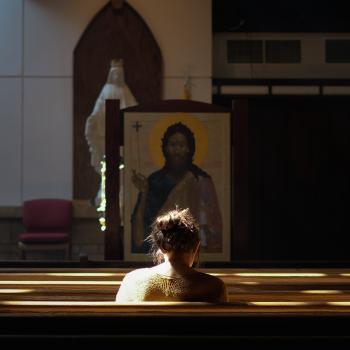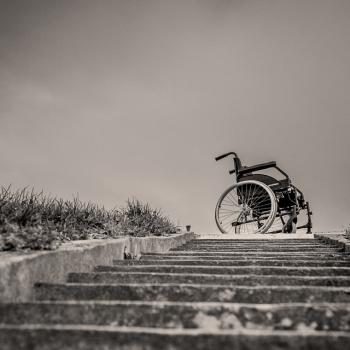A British writer just back from a monastic retreat shares some insight into welfare and charity that he learned from the world of monks:
It occurred to me while on my retreat that the modern welfare system could learn a lot from the abbeys. Until the Reformation, the monastery offered alms to the poor and somewhere for people fleeing tyranny to hide. Post Reformation, the safety net was undone and people threw themselves on the charity of the local lay community. With the coming of the industrial era, the state started to take up the burden of poor relief. Dealing with ever bigger numbers, they resorted to systematization and control. Jeremy Bentham’s Panopticon provided the literal and mental architecture of the new age. Bentham conceived a structure that would allow an official to observe (“opticon”) all (“pan”) inmates of an institution without them being able to tell whether or not they are being watched. He settled on a circular structure with an inspection house at the center – from which said officials watch the inmates stationed around the perimeter. Bentham wanted his design to be used in hospitals, schools, poorhouses, and madhouses. Today it is still used to plan prisons.
Sociologist Michel Foucault correctly surmised that the Panopitcon represented the West’s evolution from a culture that punished the body to one that controlled it through subtle, but non-invasive, fascisms. What applied to penal reform also applied to welfare. Consider that the charity found in a Medieval monastery was personal: a beggar approached a monk and the monk made the individual choice to care for him. Today’s Benthamite welfare state is impersonal: people “sign on” and collect benefits from employed civil servants. Visits from social workers are centrally coordinated (and sometimes unwelcome). Moreover, the Medieval monk never demanded anything of the beggar. In contrast, the welfare state has evolved from “contract” to tool of personal reform – the state expects dole recipients to kick the drugs, look for work, do a training course etc. Even our beloved NHS is now being used as leverage to get people to stop eating or smoking.
Fr Ray Blake has posted on his website some etches by Pugin illustrating the differences between Medieval and industrial public life. The most striking is his “contrasted residences for the poor” … Tellingly, the church is some miles from the poor house. This model of charity is really a method of control and reform. It is hard to believe that anyone’s soul benefits from it, including that of the wider society that tolerates it.
True charity must surely display “compassion”, which means “to suffer with”. Again, it is the personalized nature of monasteries which enabled them to show the appropriate degree of compassion. When the countryside was hit by famine, the monks starved with their flock. When plague came, they exposed themselves to the pestilence by taking in sufferers; whole monasteries were wiped out this way. What they could not offer in physical sacrifice, they provided in existential comfort. Plague bearers could pray to Saint Sebastian for relief. This was not a distraction for the gullible, but a way of reinforcing the physical reality that the Church suffered with its people. Sebastian was tied to a post and shot full of arrows. Like other martyrs, his story brings the comfort of knowing that pain is a universal condition – and that relief is available in the life to come. A lot of people think that the ritual of Catholicism creates distance from the laity. On the contrary, it is a very human faith.

